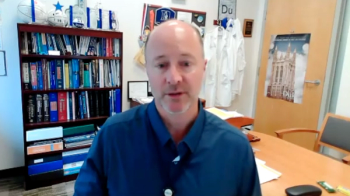
Jad Chahoud, MD, MPH, MHA, discusses the mechanism of action for zanzalintinib and walks through key design elements of the STELLAR-002 trial.

Jad Chahoud, MD, MPH, MHA, discusses the mechanism of action for zanzalintinib and walks through key design elements of the STELLAR-002 trial.

The regimen showed activity regardless of the prior immunotherapy-based combination used in the first-line setting.
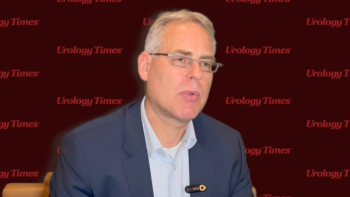
EV+P demonstrated superior efficacy to chemotherapy across all specified subgroups assessed.

Data showed that Non-Hispanic Black and Latinx/Hispanic patients were less likely to receive PSMA-PET imaging than non-Hispanic White patients.

According to the authors, the mitomycin/BCG regimen could alleviate some of the burden of the global BCG shortage.

ORR in the zanzalintinib plus nivolumab arm was 63% (95% CI: 46-77) vs 40% (95% CI: 25-57) in the zanzalintinib plus nivolumab/relatlimab arm.

In 2015, 1245 patients had prostate cancer and had also initiated a GLP-1 or GIP/GLP-1 receptor agonist compared with 69,808 patients in 2024.
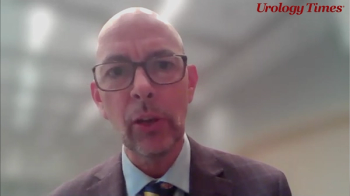
“Widespread adoption of the BCG plus mitomycin regimen would actually help to resolve that BCG shortage," says Professor Dickon Hayne.
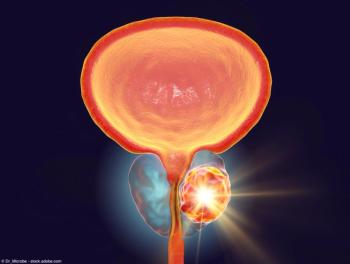
“AMPLITUDE supports early genomic testing and niraparib plus AAP as a new treatment option for patients with mCSPC and HRR gene alterations," the authors wrote.

Treatment with darolutamide was found to extend median time to deterioration of FACT-P total score by 5.1 months vs placebo

“This was a positive study, resulting in a statistically significant improvement in the primary end point of rPFS in the intent-to-treat population," said Rana R. McKay, MD, FASCO.

According to the authors, these data continue to support enzalutamide plus ADT as a standard-of-care for patients with mHSPC.

"CAN-2409 immunotherapy could represent the first new therapy for men with localized prostate cancer in over 20 years," wrote the authors.

Clinical benefit rate was observed 5 (27%) patients in cohort 1, 7 (27%) patients in cohort 2, and 2 (11%) patients in cohort 3.
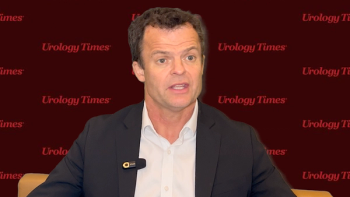
The investigators assessed EFS data from the CREST trial based on subgroups stratified by disease stage.

“As of April 2025, 616 patients have been randomized,” said Alicia Morgans, MD, MPH.
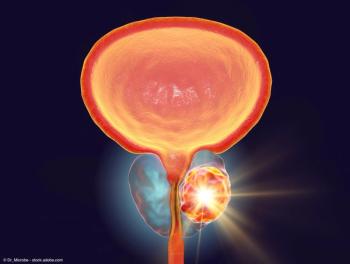
Lower-dose abiraterone acetate was found to demonstrate comparable efficacy to standard-dose abiraterone.

“Prior taxanes did not increase reported hematological adverse events during treatment with Ra-223,” the investigators reported.

“On the intention-to-treat efficacy analysis...the median PFS was numerically higher for the paclitaxel arm," said Aditya Dhanawat, MBBS, MD, DM.

The findings also lend further credence to the muscle-invasive bladder cancer treatment regimen, investigators reported.

"This final analysis of this study continues to support nivo+ipi as a standard of care for patients with untreated RCC," says Robert J. Motzer, MD.

"The pre-specified thresholds for statistical significance were not met for the dual primary end points of overall survival in cisplatin-ineligible and PD-L1 positive patients," said Michiel Van der Heijden, MD, PhD.

According to the authors, these data reinforce EV plus pembrolizumab as the first-line standard of care for la/mUC.

"These long-term results continue to support [pembrolizumab's] use as a standard of care for patients at increased risk of recurrence," says Naomi B. Haas, MD.

"There was activity across all the groups from an EFS perspective," said Thomas B. Powles, MBBS, MRCP, MD.

The cCR rate was 44.4% in the intent-to-treat population.

Vitaly Margulis, MD, reported an overall response rate of 86.5%, and a complete response rate of 73%.
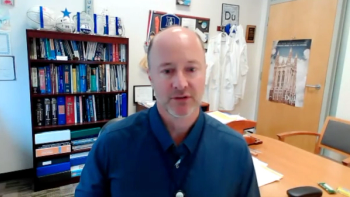
At a median follow-up of 61.4 months, enzalutamide plus ADT continued to show an improvement in OS vs ADT alone.

Hayne finds the emergence of antibody drugs conjugates in urothelial cancer to be particularly intriguing.
